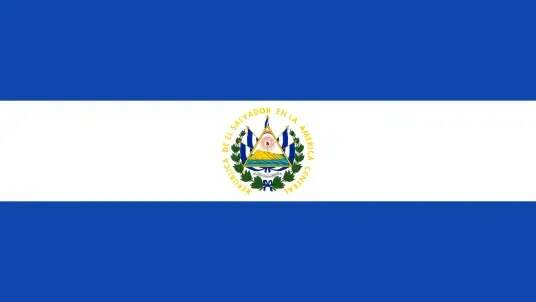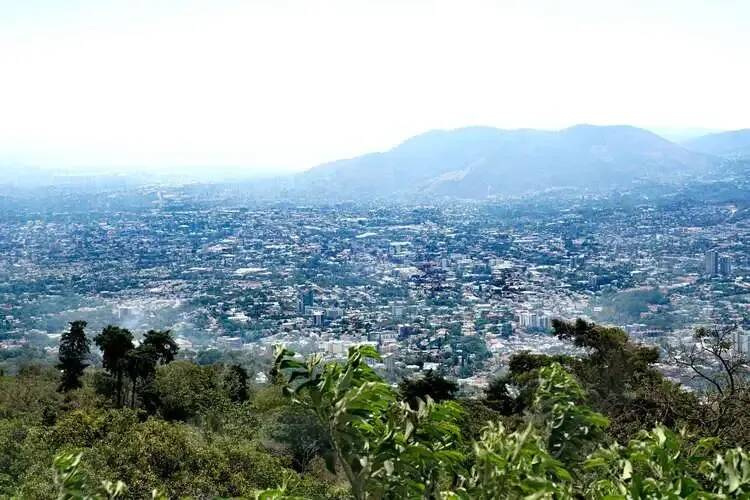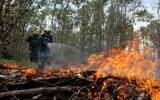Introduction to the coffee producing areas, coffee varieties Pacas and Pacamara in El Salvador, Central American countries
In Central America, there are many coffee producing countries, such as Costa Rica, Nicaragua, Panama, El Salvador and so on. El Salvador can be said to be one of the smallest countries in land area. Although its output is much less than that of other countries, El Salvador has a unique planting environment and diversified flavor performance.
El Salvador El Salvador
The Republic of El Salvador (The Republic of El Salvador) is located in the north of Central America, bordered by Honduras in the north, Guatemala in the northwest, the Pacific Ocean in the south and the Gulf of Fonseca in the east, with a land area of 21040 square kilometers.
The national flag is rectangular, and its face is connected from top to bottom by three parallel equal horizontal rectangles of blue, white and blue. Blue symbolizes blue sky and sea, while white symbolizes peace.
The white part of the flag is painted with the national emblem, which is an equilateral triangle. The three yellow lines of the triangle represent equality, truth and justice respectively. There are five volcanoes in the middle, which also symbolize five countries in Central America. On the top of the mountain stands the "pole of freedom" and "cap of freedom", shining, in which "September 15, 1821" is the day of El Salvador's independence, and the rainbow in the sky represents joy and hope. the lower ribbon says "God, Solidarity, Freedom" in Spanish, and "the Republic of El Salvador in Central America" in the outermost golden Spanish.

El Salvador terrain to mountains, plateaus, multi-volcanic, known as the "country of volcanoes", the highest peak in the country, Santa Ana active volcano, 2385 meters above sea level, while the north for the Lompa River Valley, the south for the coastal plain.
The country has a tropical climate, with an annual average temperature of 28 ℃, with a dry season from November to April and a rainy season from May to October. The lowland climate of the coastal river is hot and humid, the mountain climate is cool, and the rainfall in the mountain area is more than 1800 mm. The Pacific sea breeze, rich Rain Water and multi-volcanic soil environment provide superior conditions for coffee cultivation in El Salvador.

Coffee producing area
The main varieties planted in the major producing areas in China are relatively similar, most of which are Bourbon, followed by Pacas and Pacamara. Coffee producing areas are spread all over the country, among which the Alotepec-Metapan Alotepec-Metapan high mountains in the north and Apaneca-Iramatpec Apaneca-Ilamatepec volcanic areas in the west are the most famous.
Alotpec-Metapan Alotepec-Metapan: this production area includes the provinces of Santa Ana and Charat Nango in the north-western provinces of the country, which are mostly made up of small producers. Coffee is planted at an altitude of 1200 meters to 1800 meters.
Apaneca-Iramatpec Apaneca-Ilamatepec: located in the west of the country, the producing area has forests, lakes and volcanic mountains, grows between 800 and 2300 meters above sea level, and has the largest commercial bean production in El Salvador.
Balzamoke Saltepec EL B Á LSAMO QUEZALTEPEC: this production area is located in the heart of El Salvador and is also a volcanic area, planted between 500 and 1900 meters above sea level.
Kakawatik Cacahuatique: located in the eastern part of the country, in the sand-dominated mountain system, planting 1500-1800 meters above sea level, belongs to the country's smaller coffee producing area, accounting for only 4% of the coffee planting area, and coffee and cocoa are grown here at the same time.
Chichontepec: located in the middle of the country, it is mainly distributed around a huge dead crater, planted on hillsides between 1000 and 1500 meters above sea level.
Coffee variety
Pacas (Pacas): Pacas is a natural variety of bourbon, which is a single gene mutation, resulting in short plants, compact internodes and dense leaves. However, it can be planted intensively, has a high yield, and is suitable for planting at high elevations, but is vulnerable to disease. The variety was discovered in 1949 on a farm owned by the Pacas family in the Santa Ana region of El Salvador, hence its name and widely cultivated in El Salvador, accounting for 25 per cent of the country's coffee production.
Pacamara (Pacamara): this breed is relatively famous because it often appears in COE competitions in El Salvador. This variety is a hybrid of Pacas Pacas and the variety Malaggippe Maragogype. Pakamara has medium-sized trees with thick and large leaves and short internodes. Its cherries are longer, its tail has a small protuberance, and its coffee beans are large and oval in shape. This variety has good flavor and is suitable for planting at high altitude, but it is vulnerable to disease, especially it is very sensitive to leaf rust.
Important Notice :
前街咖啡 FrontStreet Coffee has moved to new addredd:
FrontStreet Coffee Address: 315,Donghua East Road,GuangZhou
Tel:020 38364473
- Prev

Not falling, but rising! Tims Tianhao Coffee responds to price increases of some products
▲ Click to pay attention| After the daily boutique coffee culture magazine coffee workshop short holiday, all walks of life have returned to work in an orderly manner. However, the consumer circle after the holiday is full of price increases, large and small. From scenic spot tickets to high-speed rail travel, from coffee to milk tea, every price increase news makes people feel sorry for their money
- Next

Red warning! Heavy air pollution in Honduras affects coffee industry
It is understood that Honduras is the largest producer and exporter of washed Arabica coffee in Central America. However, Honduras has recently suffered from problems such as weather changes, which has led to a decrease in output and a decrease in exports. The decrease in production and exports is mainly due to recent weather changes and severe weather in the country. Earlier, Hongdu
Related
- Customers have "changed" Manner's new products! Shop assistant: Please don't mess around!
- Remove sockets in customer areas at Starbucks stores?! Netizen: I won't go if I really tear it down
- What is the difference between the taste steps of sun-dried coffee and washed coffee? Why is sun-cured coffee sweeter and washed coffee sour?
- The recipe for salty grapefruit dirty is revealed! Coffee Festival salty grapefruit dirty coffee making materials parameters ratio milk share!
- How about the flavor of Sunlight 74158 at Sidamo Banshaha Mathieu Processing Factory in Ethiopia? 74158 Share the proportion of coffee brewing parameters!
- What effect does Italian American coffee with filter paper have? Will coffee taste better if it is put on filter paper at the bottom of the powder bowl?
- What is the color difference in coffee beans? What are the characteristics of honey processed coffee beans? Why are the anaerobically treated coffee beans uneven in color?
- How does novice Xiaobai quickly get started and make coffee? Newbies learn to make coffee by hand and share the specific steps and process process!
- Costa tea has a shelf life of 100 years?! Expert: Unable to verify
- It's a huge uproar! American milk addition was rejected by Manner employees?!

